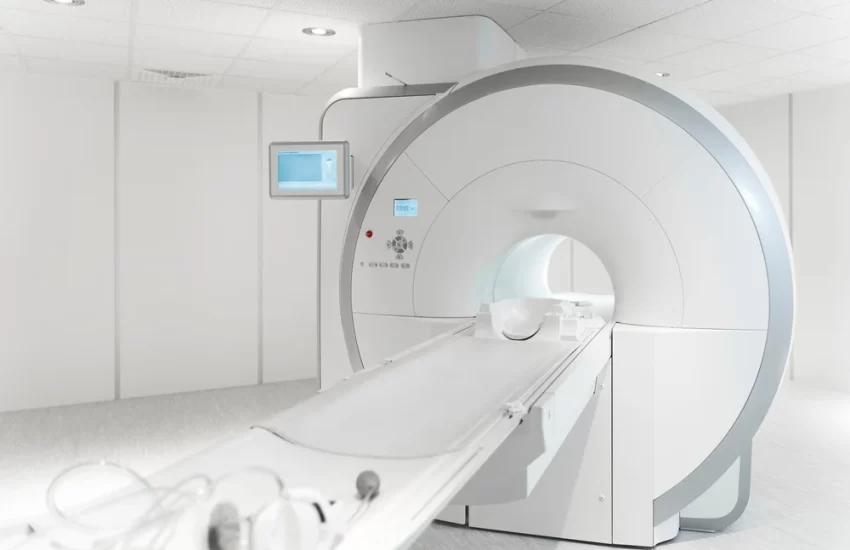CT scans, or computed tomography scans, use X-rays to create detailed cross-sectional images of the body. CT scans provide comprehensive views of internal structures and tissues by combining a series of X-ray images taken from different angles. Understanding how CT scans work is essential for healthcare professionals to accurately diagnose and monitor various medical conditions, such as injuries, tumors, and infections.
This knowledge enables better treatment decisions and improves patient outcomes. Knowing the principles behind CT scans allows for effective communication with patients and helps guide them through the diagnostic process. Seek more information from a healthcare provider for specific needs.
How CT Scans Really Work?
Here is a step-by-step guide on how CT scans work:
- Patient Preparation: The patient lies still on a table that moves slowly into the CT scanner, a large, donut-shaped machine.
- X-Ray Beams: The CT scanner emits narrow X-ray beams through the body at different angles.
- Detectors: Detectors inside the CT scanner measure how much X-rays are absorbed by the body’s tissues.
- Computer Processing: The information from the detectors is sent to a computer, which processes it and creates cross-sectional images, or slices, of the body.
- Image Reconstruction: The computer uses complex algorithms to reconstruct a detailed 3D image of the scanned area.
- Radiologist Evaluation: A radiologist interprets the images to diagnose medical conditions or evaluate treatment progress.
Types of CT scans
Here are a few common types of CT scans:
- CT Coronary Angiography: Used to visualize blood flow in the coronary arteries to detect blockages and other heart-related issues.
- CT Urography: A diagnostic test that examines the urinary tract and helps in detecting conditions such as kidney stones or obstructions.
- 3D CT Angiography: Provides detailed three-dimensional images of blood vessels to evaluate and diagnose vascular conditions.
- Multiplanar Neck CT: Imaging technique to assess structures in the neck region, such as thyroid, lymph nodes, and blood vessels.
- Multiplanar Musculoskeletal CT: Used to visualize bones, muscles, and joints in different planes to diagnose injuries or conditions affecting the musculoskeletal system.
The benefits of CT scans
Here are some benefits of CT scans:
- Clear and detailed images: CT scans provide highly detailed cross-sectional images of the body’s internal structures, allowing for better visualization of the organs and tissues.
- Quick and efficient: CT scans are generally quick to perform and provide immediate results, making them a valuable tool for diagnosing and monitoring various medical conditions.
- Pain-free procedure: CT scans are non-invasive and painless, requiring no needles or injections.
- Versatility: CT scans can assess various conditions, including cancers, fractures, infections, and internal injuries.
- Widely available: CT scanners are widely available in hospitals and imaging centers, making them easily accessible for patients who require diagnostic imaging.
- Safe and low-risk: While CT scans involve exposure to a small amount of radiation, the benefits of the obtained diagnostic information typically outweigh the potential risks.
- Treatment planning: CT scans provide valuable information for treatment planning, allowing healthcare providers to make informed decisions about the best course of action for their patients.
Understanding the Risks and Limitations CT scans
Here are some risks and limitations associated with CT scans:
- Radiation exposure: CT scans use X-rays, which expose the body to ionizing radiation. Frequent or excessive exposure may increase the risk of cancer.
- Contrast material: In some cases, contrast material may be used during a CT scan to enhance visibility. Allergic reactions to the contrast material are rare but possible.
- Kidney injury: Contrast material used in CT scans can affect kidney function, especially in those with pre-existing kidney conditions. Inform your healthcare provider about any kidney issues before getting a CT scan with contrast.
- Limitations in image interpretation: Sometimes CT scans may not always provide a clear picture, especially in the presence of motion artifacts, metallic objects, or difficult-to-visualize body structures.
- Overdiagnosis: CT scans can detect minor conditions that may not require treatment, leading to unnecessary anxiety and medical procedures.
Common Uses of CT Scans in NYC
The common uses of CT Scans in NYC include:
- Cancer: CT scans can detect and evaluate tumors in different body parts, such as the lungs, liver, brain, and bones.
- Trauma: CT scans are often used to assess internal injuries, such as fractures, bleeding, or organ damage, caused by trauma or accidents.
- Heart conditions: CT scans can provide detailed images of the heart and its blood vessels, helping to diagnose conditions like heart disease, coronary artery disease, and aortic aneurysms.
- Stroke: CT scans can help identify the presence and location of a stroke by showing changes in brain tissue and blood flow.
- Lung diseases: CT scans effectively detect and monitor lung conditions like pneumonia, emphysema, and pulmonary fibrosis.
- Abdominal conditions: CT scans can detect and assess conditions affecting the abdominal organs, such as appendicitis, kidney stones, pancreatitis, and liver disease.
- Bone and joint disorders: CT scans can provide detailed images of bones, joints, and soft tissues, aiding in diagnosing fractures, arthritis, and other orthopedic conditions.
These are just a few examples of the many conditions and diseases that can be diagnosed and monitored using CT scans.
Conclusion
Understanding the principles behind CT scans is crucial for healthcare professionals in accurately diagnosing and monitoring various medical conditions. Improved treatment decisions and patient outcomes are possible with this knowledge. Effective patient communication and guidance throughout the diagnostic process are also facilitated. For specific needs and further information, consult a healthcare provider. Stay informed, stay healthy.
